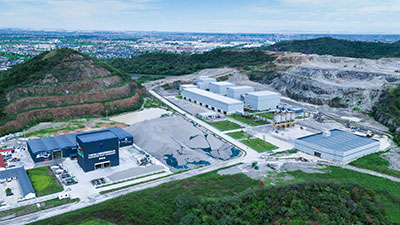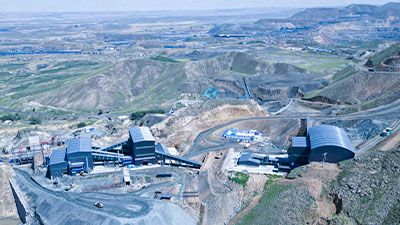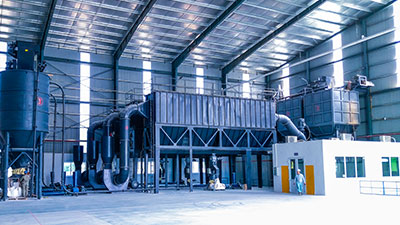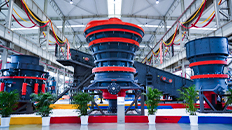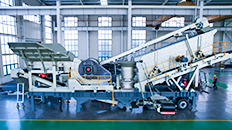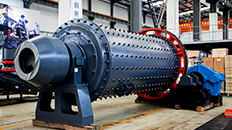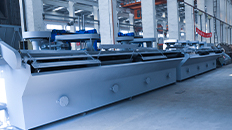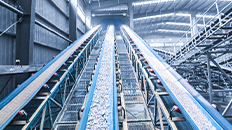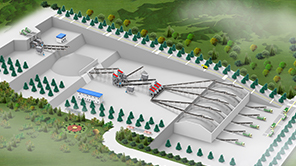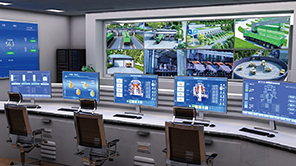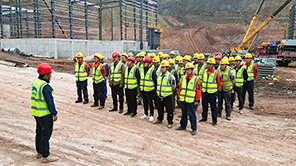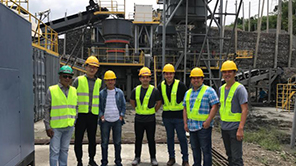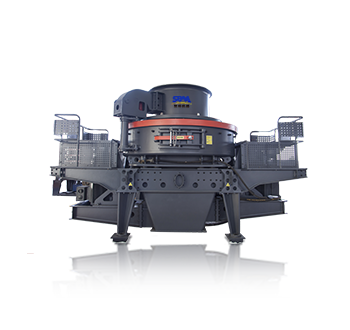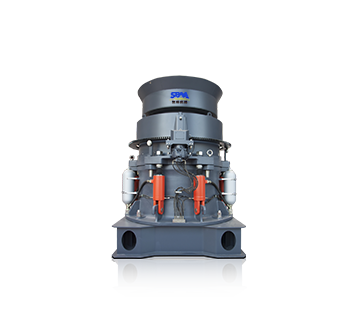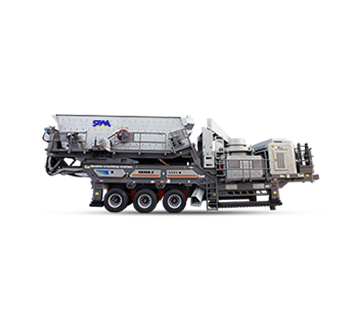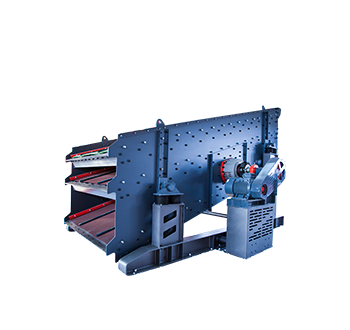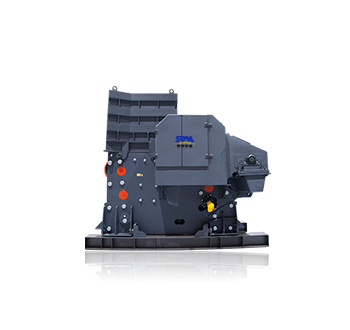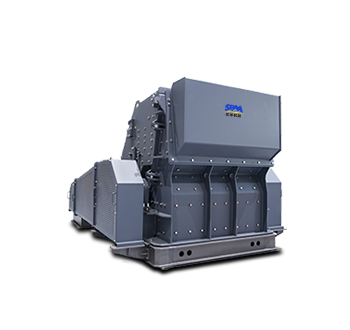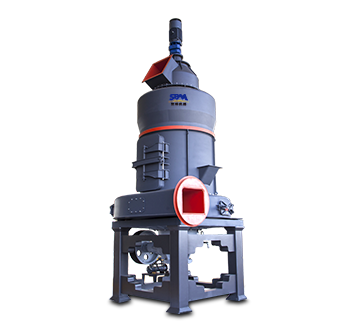Summary:In brief, cement production has the following 7 steps: crushing and pre-homogenization, raw meal preparation, homogenization of raw meal, preheating decomposition, firing of cement clinker, cement grinding and cement package.
Cement is a powdery hydraulic inorganic cementing material. After adding water and stirring, it becomes slurry, which can harden in the air or in water, and can firmly bond sand, stone and other materials together.
Cement is important material to produce concrete and has widely application in civil engineering, water conservancy, national defense and other projects.
Raw materials to produce cement
The main raw material to produce cement is lime.
Raw materials to produce cement mainly include limestone (the main material to provide Cao), clayed raw materials (provide Sio2, Al2O3 and a small amount of Fe2O3), calibration raw materials (to supplement some insufficient components), auxiliary raw materials (mineralizers, solvents, grinding aids) and so on.
Generally speaking, limestone accounts for 80% of the raw materials for cement manufacturing, which is the main material for cement manufacturing.
Classification of cement
According to application and performance, cement can be divided into:
(1) General cement: general cement usually used in general civil engineering. General cement mainly refers to the six major types of cement specified in GB175-2007, namely Portland cement, ordinary Portland cement, slag Portland cement, pozzolanic Portland cement, fly ash Portland cement and composite Portland cement.
(2) Special cement: cement with special properties or purposes, such as G-grade oil well cement, fast hardening Portland cement, road Portland cement, aluminate cement, sulphoaluminate cement, etc.
What is the manufacturing process of cement?
As one of the most commonly used raw materials, cement plays an important role in the construction of projects, civil industry, transportation and other industries. In cement production process, do we need crushing and grinding equipment? Are they important?
In brief, cement production has the following 7 steps: crushing and pre-homogenization, raw meal preparation, homogenization of raw meal, preheating decomposition, firing of cement clinker, cement grinding and cement package.

1. crushing and pre-homogenization
(1)Crushing.
In cement production process, most of the raw materials need to be crushed, such as limestone, clay, iron ore and coal. Limestone is the most consumable raw material for cement production. After mining, limestone has large particle size and high hardness. Therefore, the crushing of limestone occupies a relatively important position in the material crushing of cement production.

Pre-homogenization of raw materials. The pre-homogenization technology is to use scientific stacking and reclaiming technology to realize the preliminary homogenization of the raw materials during the storage and retrieval process of the raw materials, so that the raw material storage yard has the functions of storage and homogenization at the same time.

Advantages of pre-homogenization:
1)Homogenize the raw material composition to reduce quality fluctuations to facilitate the production of higher quality clinker and stabilize the production of the firing system.
2)Expand the utilization of mine resources, improve the mining efficiency, maximize the expansion of mine coverings and interlayers, no or less waste rock in the process of mining.
3)The quality requirements for mining can be relaxed, and the mining cost of the mine can be reduced.
4)Strong adaptability to sticky and wet materials.
5)Provide long-term stable raw materials for the factory, and can also batch raw materials of different components in the yard, making it a pre-batch yard, creating conditions for stable production and improving equipment operation rate.
6) High degree of automation.
2. raw meal preparation
In the cement production process, to produce every 1 ton of Portland cement, we need to grind at least 3 tons of materials (including various raw materials, fuels, clinkers, mixtures, and gypsum). According to statistics, the power consumed by dry-process cement production line grinding operations accounts for more than 60% of the power of the whole plant, of which raw meal grinding accounts for more than 30%, coal grinding accounts for about 3%, and cement grinding accounts for about 40%. Therefore, reasonable selection of grinding equipment and process flow, optimization of process parameters, correct operation, and control of the operating system are of great significance for ensuring product quality and reducing energy consumption.
3. homogenization of raw meal
In the process of new dry-process cement production, stabilizing the composition of raw meal into the kiln is the prerequisite for stabilizing the thermal system of clinker firing, and the raw meal homogenization system plays the final checkpoint for stabilizing the composition of raw meal into the kiln.
4. preheating decomposition
The preheating and partial decomposition of the raw meal are completed by the preheater, instead of part of the function of the rotary kiln, to shorten the length of the kiln, and at the same time make the kiln to carry out the heat exchange process of the gas and material in the accumulation state, and move it to the preheater in the suspended state, make raw meal can be fully mixed with the hot gas discharged from the kiln, which increases the contact area of the gas and the material, has a fast heat transfer rate and high heat exchange efficiency, so as to improve the production efficiency of the kiln system and reduce the heat consumption of clinker firing.

5. firing of cement clinker
After the raw meal is preheated and pre-decomposed in the cyclone preheater, the next step is to enter the rotary kiln for clinker firing. In the rotary kiln, the carbonate is further rapidly decomposed and a series of solid phase reactions occur to generate minerals in the cement clinker. As the temperature of the material rises, the minerals will turn into liquid phase, and a large amount of (clinker) will be generated by the reaction. After the clinker is fired, the temperature begins to drop. Finally, the cement clinker cooler cools the high-temperature clinker discharged from the rotary kiln to the temperature that the downstream transportation, storage and cement mill can withstand, and at the same time recovers the sensible heat of the high-temperature clinker to improve the thermal efficiency and clinker quality of the system.

rotary kiln

cooler
6. cement grinding
Cement grinding is the last process in cement manufacturing and the process that consumes the most electricity. Its main function is to grind cement clinker (gelling agent, performance adjustment material, etc.) to a suitable particle size (expressed in fineness, specific surface area, etc.) to form a certain particle gradation, increase its hydration area, and accelerate hydration speed, to meet the requirements of cement slurry condensation, hardening.

7. cement package
Cement leaves the factory with two shipping methods: bagged and bulk.


